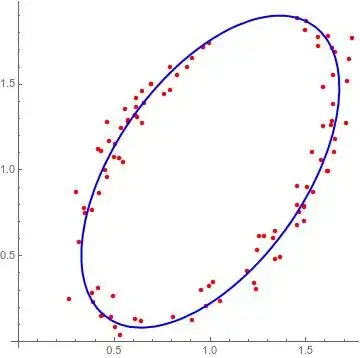I am trying to find a least-squares ellipse fit for a set of 100 data points $(x,y)$.
Now I have found the values of $A,B,C,D,E,F$ according to the conical equation of the ellipse $$ Ax^2+Bxy+Cy^2+Dx+Ey+F=0 $$ I would like to know how to find the points that actually lie on this ellipse. From my basic understanding, if I substitute a value of $x$ in the above equation, it should give me the corresponding value of $y$.
When I do the above, I get a straight line and not really a fitted ellipse. How can I find the fitted ellipse?
My task is to plot these points so that I can see the best possible fit. For reference see [link]. This is the source of ellipse fitting that I am currently using.
I appreciate help from anyone who has experience with this. I am sorry if I am lacking some basic mathematical knowledge, but from what I understand, it isn't all that straightforward.
Regards
Arj

yvalues? They are not linear in x unless A,B,C are small relative to the other params, I think? – Sanjay Manohar Aug 13 '21 at 11:32